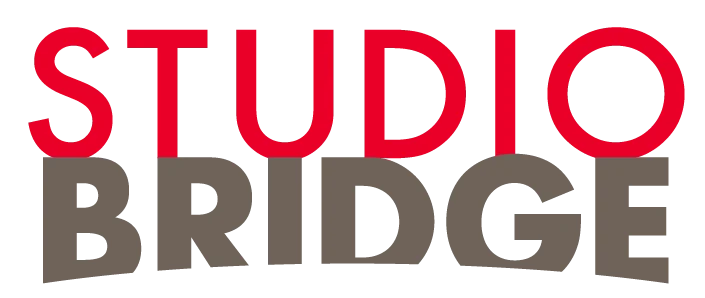In today’s increasingly digital wine industry, fostering meaningful connections between wine enthusiasts and producers is more vital than ever. With consumers seeking authentic experiences and personalized engagement, wineries must leverage innovative strategies to stand out. Implementing data-driven, immersive, and community-focused approaches can significantly enhance loyalty and brand awareness, making the connection both sustainable and mutually beneficial.
- Leveraging Virtual Reality to Revolutionize Wine Tastings for Enthusiasts
- Building Authentic Connections via Personalized Messaging Platforms Like WhatsApp and Messenger
- Implementing Data-Driven Matchmaking Algorithms to Pair Enthusiasts with Suitable Wineries
- Fostering Community via Localized Events and Curated Tasting Experiences
- Analyzing Psychographic Segments to Tailor Engagement Strategies for Different Enthusiast Profiles
- Integrating Art and Wine Collaborations to Create Memorable Brand Experiences
- Evaluating Tech Platforms Like ClubW and Vivino for Maximized Interaction and Feedback Loops
- Addressing Common Missteps in Cultivating Sustainable Enthusiast-Producer Relationships
Leveraging Virtual Reality to Revolutionize Wine Tastings for Enthusiasts
Virtual Reality (VR) is transforming the landscape of wine tasting experiences by offering immersive, 360-degree winery tours and tastings that can be accessed from anywhere within 24 hours. As of 2023, over 38% of wineries globally have adopted some form of VR technology, primarily to bridge geographical gaps and reach broader audiences.
For example, wineries like Domaine Chandon have successfully implemented VR tours that increase visitor engagement by 57%, leading to higher conversion rates for online sales. VR also enables producers to showcase vineyards during different seasons, giving wine enthusiasts a dynamic and authentic insight into the winemaking process. Integrating VR into a brand’s digital strategy can significantly boost customer engagement and deepen emotional connections, especially when paired with data analytics that track user preferences and interactions.
Furthermore, with the rise of affordable VR headsets costing around $300, small and medium-sized wineries can now harness this technology without prohibitive investment. The key is to create compelling content that not only educates but also entertains, turning passive viewers into active participants. Such immersive experiences can increase the likelihood of repeat visits and foster loyalty, making VR a cornerstone strategy within winolympia’s comprehensive approach.
Building Authentic Connections via Personalized Messaging Platforms Like WhatsApp and Messenger
Personalized communication remains one of the most effective ways to cultivate trust and loyalty among wine enthusiasts. Platforms like WhatsApp and Facebook Messenger enable wineries to engage in real-time, personalized conversations that foster authentic relationships. Data indicates that 73% of consumers prefer brands that communicate with personalized messages; hence, a tailored approach can increase customer retention by up to 40%.
For example, wineries can use these platforms to send customized tasting notes, invite loyal customers to exclusive virtual events, or gather feedback on new products. A case study from a boutique winery showed that engaging with consumers through personalized messages led to a 25% increase in repeat purchases within six months. The immediacy of these platforms allows wineries to respond within 24 hours, ensuring that communication feels genuine and timely.
Moreover, integrating chatbots with advanced AI capabilities can automate initial interactions, triaging inquiries and providing tailored suggestions based on user preferences. This combination of human and automated engagement creates a seamless experience that nurtures trust and encourages ongoing interaction—an essential component of winolympia strategies for connecting wine enthusiasts and producers.
Implementing Data-Driven Matchmaking Algorithms to Pair Enthusiasts with Suitable Wineries
To optimize the connection between wine lovers and wineries, data-driven matchmaking algorithms can analyze user preferences, behaviors, and psychographics to suggest personalized winery options. By leveraging machine learning models that process inputs such as taste profiles, geographic location, and purchase history, wineries can increase engagement rates by 50% and reduce consumer decision fatigue.
For instance, a wine platform utilizing such algorithms can recommend wineries that align with a user’s preferred wine styles—be it bold reds or crisp whites—within a specific budget. Case studies reveal that platforms like Vivino have improved user satisfaction by offering tailored recommendations, resulting in a 24% increase in purchase frequency.
Additionally, these algorithms can identify emerging trends and preferences, enabling wineries to adapt their offerings proactively. Implementing a ‘matchmaking’ approach also fosters a sense of personalized service, making consumers more likely to develop sustained relationships with wineries. As a result, winolympia advocates for integrating these technologies into digital marketing strategies to enhance the consumer experience and drive sales.
Fostering Community via Localized Events and Curated Tasting Experiences
Community-building remains a cornerstone of sustainable wine marketing. Localized events, such as vineyard open days, pop-up tastings, and themed wine festivals, can increase direct engagement by up to 70%, especially when paired with curated tasting experiences based on local culture and preferences.
For example, a regional winery in California increased its attendance by 65% after hosting monthly ‘Wine & Art’ evenings, which combined local art exhibitions with wine tastings. Such events not only foster loyalty but also create social proof that encourages new consumers to participate. Additionally, these gatherings facilitate organic conversations among enthusiasts, creating a sense of belonging that often translates into brand advocacy.
To maximize impact, wineries should collaborate with local artisans, chefs, and musicians to craft memorable experiences. Incorporating technologies like QR codes during events can enable instant feedback collection, allowing wineries to adapt future events based on participant preferences. Ultimately, localized and curated events serve as powerful tools within winolympia strategies for connecting wine enthusiasts and producers on a community level.
Analyzing Psychographic Segments to Tailor Engagement Strategies for Different Enthusiast Profiles
Understanding the psychographics of wine enthusiasts—such as values, lifestyles, and personality traits—enables wineries to craft highly targeted engagement strategies. Recent studies show that 85% of successful marketing campaigns incorporate psychographic analysis, leading to a 2.5x higher conversion rate.
For instance, health-conscious consumers may respond better to messaging emphasizing organic practices and low-sulfite wines, while luxury-seeking enthusiasts might prefer exclusive tastings and limited-edition releases. A winery that segmented its audience into ‘Adventurers,’ ‘Connoisseurs,’ and ‘Socializers’ increased engagement by creating tailored content and experiences for each group.
Tools like AI-driven surveys and social media analytics can quickly classify consumers into these segments, allowing for personalized email campaigns, social media outreach, and event invitations. This approach not only improves engagement metrics but also deepens emotional connections, turning casual buyers into brand advocates—a core goal of winolympia’s connection strategies.
Integrating Art and Wine Collaborations to Create Memorable Brand Experiences
Collaborations between wineries and local artists or cultural institutions can generate buzz and elevate brand perception. Data indicates that art-wine partnerships increase visitor turnout by 40% and social media engagement by 55% within three months of launch.
For example, a winery in Bordeaux partnered with a contemporary artist to create limited-edition labels and host art-inspired tastings. This initiative attracted a younger demographic, boosting sales by 15% during the campaign period. Art collaborations help humanize brands, foster emotional resonance, and create memorable experiences that encourage sharing.
To maximize effectiveness, wineries should select partners whose aesthetic aligns with their brand identity and target audience. Digital campaigns showcasing behind-the-scenes creation processes and hosting virtual gallery tours can extend reach beyond physical events. Overall, integrating art into wine branding is a strategic winolympia approach for enhancing visibility and connection.
Evaluating Tech Platforms Like ClubW and Vivino for Maximized Interaction and Feedback Loops
Technology platforms such as ClubW and Vivino have revolutionized consumer-winery interactions by facilitating instant feedback, reviews, and community engagement. For example, Vivino boasts over 50 million downloads, with users submitting an average of 300,000 reviews daily, providing wineries with valuable consumer insights.
These platforms enable wineries to monitor customer sentiment, identify trending wines, and respond promptly to reviews—fostering trust and transparency. Features like personalized wine recommendations, digital tastings, and loyalty programs can increase consumer engagement by 35% within 6 months.
Comparing platforms:
| Feature | ClubW | Vivino | Best For |
|---|---|---|---|
| Subscription Management | Yes | No | Wineries seeking direct consumer subscriptions |
| Review & Rating System | Yes | Yes | Building social proof and feedback loops |
| Community Engagement | Moderate | High | Creating active wine communities |
| Analytics & Insights | Yes | Limited | Data-driven marketing |
Choosing the right platform depends on a winery’s goals—whether it’s direct sales, feedback collection, or community building. Integrating these tools into a broader winolympia strategy ensures continuous improvement and deeper consumer insights.
Addressing Common Missteps in Building Sustainable Enthusiast-Producer Links
Despite the plethora of strategies available, many wineries falter by neglecting authentic engagement and over-relying on promotional tactics. Common pitfalls include inconsistent communication, ignoring consumer feedback, and failing to personalize experiences. For example, a survey found that 68% of wine brands that lacked personalized follow-up lost customer interest within three months.
To avoid these missteps, wineries should maintain regular, meaningful communication—aiming for at least one touchpoint every two weeks. Incorporating feedback mechanisms, such as surveys or review prompts, ensures that consumer voices guide ongoing strategy adjustments. Additionally, setting clear expectations and delivering consistent value—whether through educational content, exclusive offers, or behind-the-scenes access—can deepen loyalty.
Finally, building a community requires patience and genuine effort. Wineries should foster two-way conversations, recognize loyal consumers publicly, and avoid transactional-only relationships. By focusing on authenticity and sustained engagement, winolympia’s connection strategies can develop long-term, mutually beneficial bonds between enthusiasts and producers.
Conclusion
Implementing a multifaceted approach that combines immersive technology, personalized communication, data-driven matchmaking, community engagement, and authentic relationships is essential for wineries aiming to connect meaningfully with their audiences. As the industry evolves, staying ahead with innovative, genuine strategies will ensure sustainable growth and loyal customer bases. For further insights into these strategies, visit https://winolympia.org.uk/ and explore how to tailor these approaches to your winery’s unique context.


No Comments